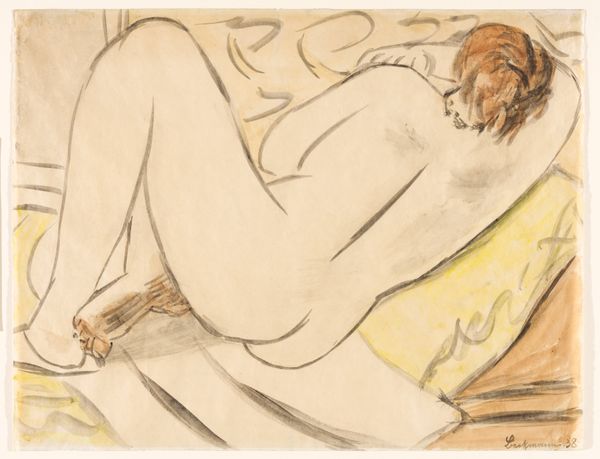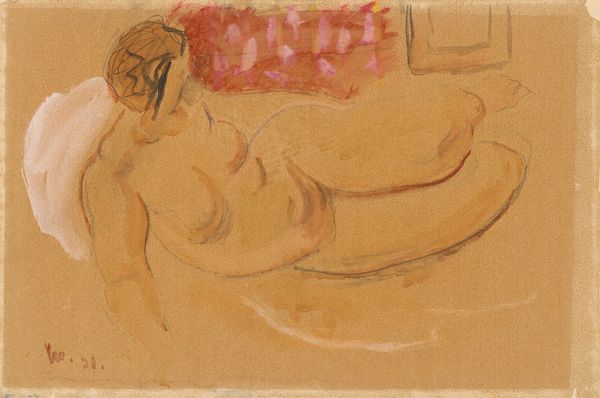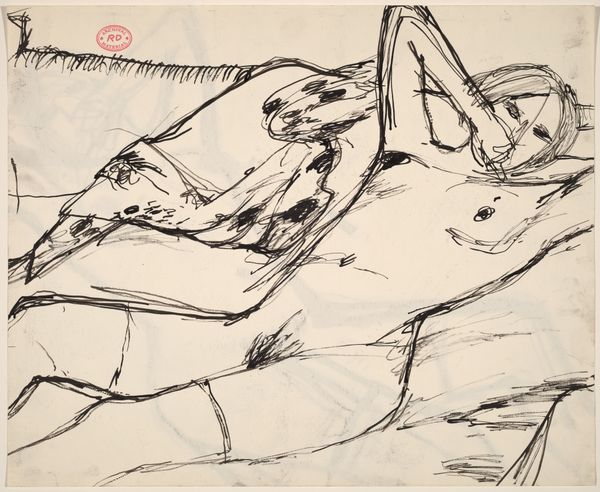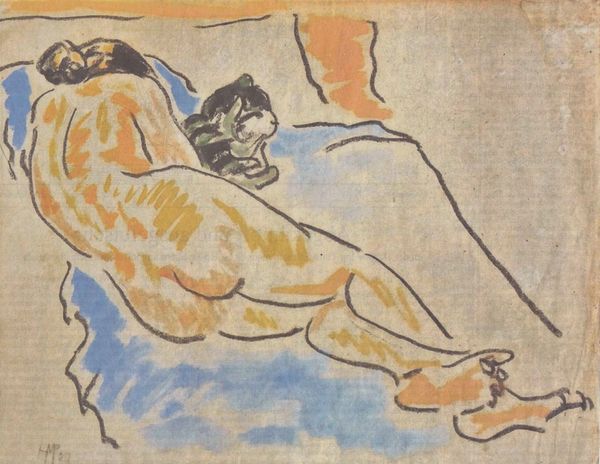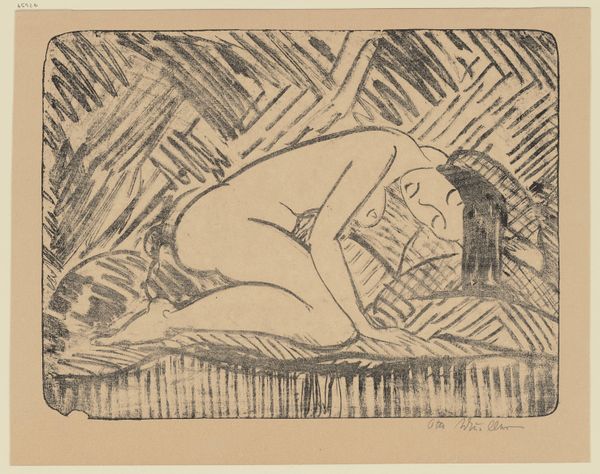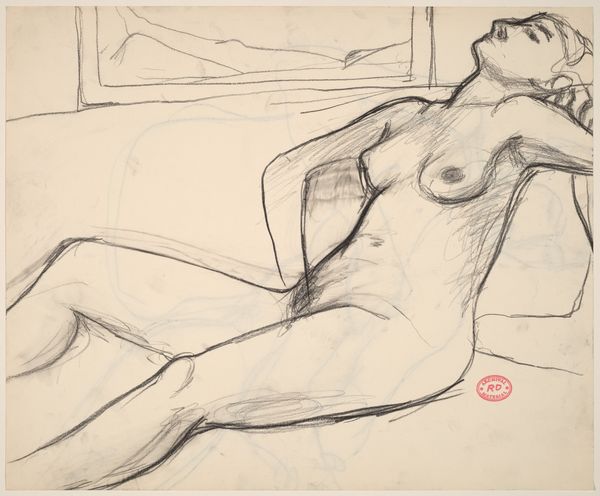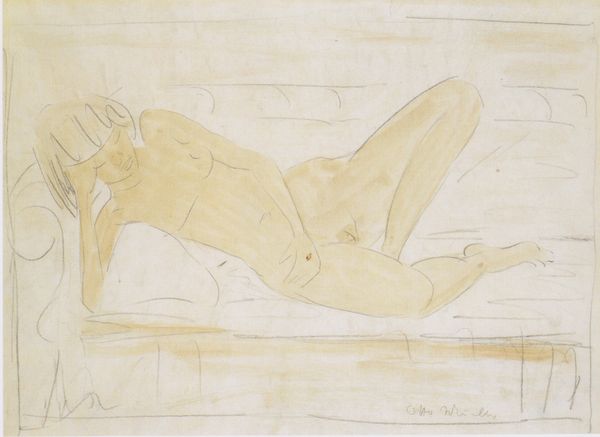
drawing, pastel
#
drawing
#
figuration
#
expressionism
#
pastel
#
nude
#
watercolor
Dimensions: 56 x 45 cm
Copyright: Public domain
Curator: I’m immediately drawn to the almost dreamlike quality. It’s as if Otto Mueller captured a fleeting moment of intimacy, like a memory half-forgotten. What's your take? Editor: You're right, there's a vulnerability that’s almost startling, particularly when we consider the historical context. This is Otto Mueller’s “Zwei Liegende Mädchen,” or “Two Reclining Girls,” created in 1926. The use of pastels gives it a soft, ethereal quality, but the figures themselves exist within this loaded gaze… Curator: Loaded, how? It feels gentle to me. Almost reverent. He uses such simple lines and soft colors. It’s the kind of intimacy where there's a lack of pretense, like watching the way two friends might just… exist, you know? The light in the scene makes me feel quiet, somehow. Editor: But, the ‘reverence’ you're noting plays into the long, *long* history of the male gaze in art history. Looking at these supine, unclothed women… we have to question who the implied viewer is here. The fact that Mueller situates their bodies for our observation reinforces the dynamics of power. How does it affect *your* perception of the piece knowing this? Curator: It’s…complicated, isn’t it? Because there *is* something incredibly intimate about the poses. Their limbs intertwine almost effortlessly, and the blues in the work provide such an atmosphere. It is easy to feel something quiet and moving… Even when that gentleness is part of this framework you're describing. Editor: Precisely! It forces us to consider the artistic conventions and societal expectations surrounding the representation of women. By recognizing this history, we can engage with the work on a deeper level. Think, what does it mean to *see* this image through contemporary, intersectional lens, especially knowing Mueller was part of the Expressionist movement? Curator: Right, expressionism. Always chasing raw emotional response, even when it's complex. Makes you wonder if Mueller himself grappled with what you brought up, this inherent conflict. Maybe that tension is part of why the piece resonates, the beautiful unease of it all. Editor: Absolutely, the push and pull. By situating art like Mueller's within these conversations, we encourage audiences to critically examine not only the artwork but also the systems that shape our understanding of it. That's why those feelings—quietude, discomfort—are crucial. Curator: Exactly. Art becomes this space for us to hold all that messiness. Okay, it gives you much to consider with pieces that invite you in so deeply, doesn’t it? I love it, what a painting.
Comments
No comments
Be the first to comment and join the conversation on the ultimate creative platform.

